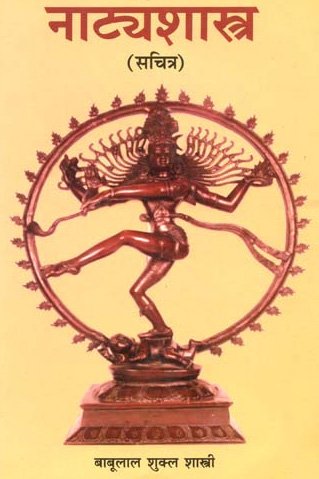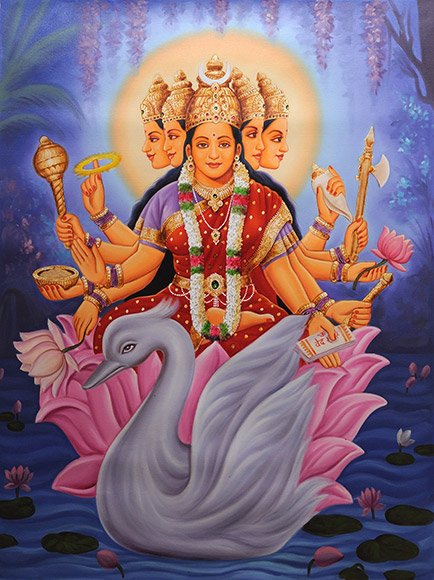Totaka, Toṭaka: 14 definitions
Introduction:
Totaka means something in Hinduism, Sanskrit, Marathi, Hindi. If you want to know the exact meaning, history, etymology or English translation of this term then check out the descriptions on this page. Add your comment or reference to a book if you want to contribute to this summary article.
In Hinduism
Purana and Itihasa (epic history)
Source: Cologne Digital Sanskrit Dictionaries: The Purana IndexToṭaka (तोटक).—A Chandas in which Bāṇāsura prayed to Śiva who blessed him with immortality.*
- * Matsya-purāṇa 188. 66 and 72.

The Purana (पुराण, purāṇas) refers to Sanskrit literature preserving ancient India’s vast cultural history, including historical legends, religious ceremonies, various arts and sciences. The eighteen mahapuranas total over 400,000 shlokas (metrical couplets) and date to at least several centuries BCE.
Natyashastra (theatrics and dramaturgy)
Source: Wisdom Library: Nāṭya-śāstra1) Toṭaka (तोटक) refers to a type of syllabic metre (vṛtta), according to the Nāṭyaśāstra chapter 16. In this metre, the third, the sixth, the ninth and the twelfth syllables of a foot (pāda) are heavy (guru), while the rest of the syllables are light (laghu).
⏑⏑⎼¦⏑⏑⎼¦⏑⏑⎼¦⏑⏑⎼¦¦⏑⏑⎼¦⏑⏑⎼¦⏑⏑⎼¦⏑⏑⎼¦¦
⏑⏑⎼¦⏑⏑⎼¦⏑⏑⎼¦⏑⏑⎼¦¦⏑⏑⎼¦⏑⏑⎼¦⏑⏑⎼¦⏑⏑⎼¦¦
Toṭaka falls in the Jagatī class of chandas (rhythm-type), which implies that verses constructed with this metre have four pādas (‘foot’ or ‘quarter-verse’) containing twelve syllables each.
2) Toṭaka (तोटक, “quarreling”) represents one of the thirteen garbhasandhi, according to the Nāṭyaśāstra chapter 21. Garbhasandhi refers to the “segments (sandhi) of the development part (garbha)” and represents one of the five segments of the plot (itivṛtta or vastu) of a dramatic composition (nāṭaka).
(Description of Toṭaka): An angry speech is called Quarrel (toṭaka).
3) Toṭaka (तोटक) is the name of a meter belonging to the Natkuṭa class described in the Nāṭyaśāstra chapter 32:—“the metre which has in its feet of twelve syllables the third, the sixth, the ninth, and the last long, is toṭaka”.

Natyashastra (नाट्यशास्त्र, nāṭyaśāstra) refers to both the ancient Indian tradition (shastra) of performing arts, (natya—theatrics, drama, dance, music), as well as the name of a Sanskrit work dealing with these subjects. It also teaches the rules for composing Dramatic plays (nataka), construction and performance of Theater, and Poetic works (kavya).
Chandas (prosody, study of Sanskrit metres)
Source: Shodhganga: a concise history of Sanskrit Chanda literature1) Toṭaka (तोटक) refers to one of the 27 metres mentioned in the Suvṛttatilaka ascribed to Kṣemendra (11th century). The Suvṛttatilaka is a monumental work of Sanskrit prosody considered as unique in its nature. In this work Kṣemendra neither introduces any new metre nor discusses all the metres used in his time. He discusses 27 popular metres (e.g., Toṭaka) which were used frequently by the poets.
2) Toṭaka (तोटक) is the alternative name of a Sanskrit metre (chandas) mentioned by Hemacandra (1088-1173 C.E.) in his auto-commentary on the second chapter of the Chandonuśāsana. Toṭaka corresponds to Mātrāsamaka. Hemacandra gives these alternative names for the metres by other authorities (like Bharata), even though the number of gaṇas or letters do not differ.
3) Toṭaka (तोटक) refers to one of the 135 metres (chandas) mentioned by Nañjuṇḍa (1794-1868 C.E.) in his Vṛttaratnāvalī. Nañjuṇḍa was a poet of both Kannada and Sanskrit literature flourished in the court of the famous Kṛṣṇarāja Woḍeyar of Mysore. He introduces the names of these metres (e.g., Toṭaka) in 20 verses.
4) Toṭaka (तोटक) refers to one of the 34 varṇavṛttas (syllabo-quantitative verse) dealt with in the Vṛttamaṇimañjūṣā, whose authorship could be traced (also see the “New Catalogus Catalogorum” XXXI. p. 7).
5) Toṭaka (तोटक) refers to one of the seventy-two sama-varṇavṛtta (regular syllabo-quantitative verse) mentioned in the 334th chapter of the Agnipurāṇa. The Agnipurāṇa deals with various subjects viz. literature, poetics, grammar, architecture in its 383 chapters and deals with the entire science of prosody (e.g., the toṭaka metre) in 8 chapters (328-335) in 101 verses in total.

Chandas (छन्दस्) refers to Sanskrit prosody and represents one of the six Vedangas (auxiliary disciplines belonging to the study of the Vedas). The science of prosody (chandas-shastra) focusses on the study of the poetic meters such as the commonly known twenty-six metres mentioned by Pingalas.
Languages of India and abroad
Marathi-English dictionary
Source: DDSA: The Molesworth Marathi and English Dictionarytōṭakā (तोटका).—& tōṭagā m Commonly tōḍagā.
Source: DDSA: The Aryabhusan school dictionary, Marathi-Englishtōṭakā (तोटका).—m Verification of a prediction; See tōḍagā.
Marathi is an Indo-European language having over 70 million native speakers people in (predominantly) Maharashtra India. Marathi, like many other Indo-Aryan languages, evolved from early forms of Prakrit, which itself is a subset of Sanskrit, one of the most ancient languages of the world.
Sanskrit dictionary
Source: DDSA: The practical Sanskrit-English dictionaryToṭaka (तोटक).—a. Quarrelsome.
-kaḥ Name of a commentator.
Source: Cologne Digital Sanskrit Dictionaries: Edgerton Buddhist Hybrid Sanskrit DictionaryToṭaka (तोटक).—m. or nt., name of a meter: °ka-vṛttena Laṅkāvatāra-sūtra 4.5, referring to the preceding three verses, the pāda scheme of which seems to be —u—uuu—uux, which is inconsistent with Piṅgala's scheme of the toṭaka, ISt. 8.378 f., uu—uu—uu-uu-.
Source: Cologne Digital Sanskrit Dictionaries: Shabda-Sagara Sanskrit-English DictionaryToṭaka (तोटक).—n.
(-kaṃ) A measure or verse, a stanza, each line containing twelve syllables.
Source: Cologne Digital Sanskrit Dictionaries: Cappeller Sanskrit-English DictionaryToṭaka (तोटक).—[adjective] quarrelsome; [neuter] violent speech, [Name] of a metre & a kind of drama.
Source: Cologne Digital Sanskrit Dictionaries: Monier-Williams Sanskrit-English Dictionary1) Toṭaka (तोटक):—mfn. (= troṭ) quarrelsome, [Chandaḥ-sūtra vi, 31], [Halāy.]
2) m. Name of a venomous insect, [Suśruta v, 3]
3) of a pupil of Śaṃkarācārya, [Saṃkṣepa-śaṃkara-vijaya]
4) n. angry speech, [Daśarūpa i, 40; Pratāparudrīya]
5) a metre of 4 x 12 syllables
6) See also troṭ.
[Sanskrit to German]
Sanskrit, also spelled संस्कृतम् (saṃskṛtam), is an ancient language of India commonly seen as the grandmother of the Indo-European language family (even English!). Closely allied with Prakrit and Pali, Sanskrit is more exhaustive in both grammar and terms and has the most extensive collection of literature in the world, greatly surpassing its sister-languages Greek and Latin.
Hindi dictionary
Source: DDSA: A practical Hindi-English dictionaryṬoṭakā (टोटका):—(nm) a superstitious remedy, sorcerous act, magical charm; an amulet.
...
Kannada-English dictionary
Source: Alar: Kannada-English corpusTōṭaka (ತೋಟಕ):—[noun] (pros.) a kind of metre having twelve syllables in each line.
Kannada is a Dravidian language (as opposed to the Indo-European language family) mainly spoken in the southwestern region of India.
See also (Relevant definitions)
Starts with: Totaka acarya, Totakacharya, Totakai, Totakam, Totakamatu, Totakashloka, Totakatti, Totakavyakhya.
Full-text: Trotaka, Totakashloka, Tona, Totakavyakhya, Shrutisarasamuddharana, Garbhasandhi, Totakacharya, Totaka acarya, Parshvanathastavana, Matrasamaka.
Relevant text
Search found 14 books and stories containing Totaka, Toṭaka, Tōṭakā, Toṭakā, Ṭoṭaka, Ṭoṭakā, Tōṭaka; (plurals include: Totakas, Toṭakas, Tōṭakās, Toṭakās, Ṭoṭakas, Ṭoṭakās, Tōṭakas). You can also click to the full overview containing English textual excerpts. Below are direct links for the most relevant articles:
Amarakoshodghatana of Kshirasvamin (study) (by A. Yamuna Devi)
Education (8): Knowledge of Metres and Figures of speech < [Chapter 4 - Cultural Aspects]
Preceptors of Advaita (by T. M. P. Mahadevan)
Bhagavatpadabhyudaya by Lakshmana Suri (study) (by Lathika M. P.)
Canto VIII—Depicting of Digvijaya < [Chapter 2 - Content Analysis of Bhagavatpādābhyudaya]
Maṭhas founded by Śaṅkara < [Chapter 4 - Similarities and Dissimilarities]
Śaṅkara an Icon of Indian glorious past < [Chapter 1 - Life and Works of Lakṣmaṇa Sūrin]
Vasudevavijaya of Vasudeva (Study) (by Sajitha. A)
Metres used in Vāsudevavijaya < [Chapter 4 - Vāsudevavijaya—A Literary Appreciation]
The Padma Purana (by N.A. Deshpande)
Chapter 15 - The Greatness of Amarakaṇṭaka < [Section 3 - Svarga-khaṇḍa (section on the heavens)]
Gati in Theory and Practice (by Dr. Sujatha Mohan)
Gati performed in Lāsyāṅgas < [Chapter 3 - Application of gati in Dṛśya-kāvyas]